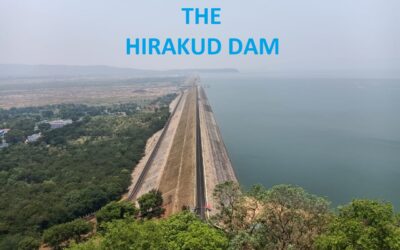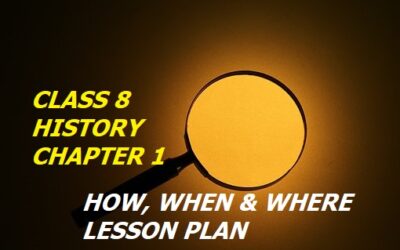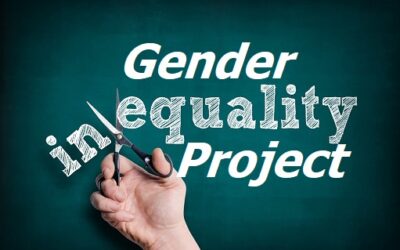GOOD NEWS FOR CLASS VIII GEOGRAPHY STUDENTS – MCQs FOR REVISION FROM TERM-1 SYLLABUS

CLASS VIII GEOGRAPHY TERM 1 REVISION MCQ
It’s a Good news for the students of class VIII. You get all important solved revision questions (MCQ) Term-1 at one place.
In this post first four chapters have been covered of Geography for revision of Term-1.
All questions have been selected from Geography book of class VIII (NCERT) http://ncertbooks.prashanthellina.com/class_8.SocialScience.ResourceAndDevelopmentGeography/index.html
Class X students can also refer these questions as the chapters are same.
These questions of class VIII Geography will also help the students to revise and prepare for NTSE, SSC, NDA etc.
Let’s begin to solve class VIII Geography questions (MCQ) for Term-1 (half-yearly)
CLASS VIII GEOGRAPHY REVISION: CHAPTER 1- RESOURCE
Q1. Resources that we find in nature and are used without much modification are called ………..
(a) Human Resource
(b) Natural Resource
(c) Renewable Resource
(d) Human Made Resource
Q2. Natural resource are not classified into various types on the basis of ____________
(a) Distribution
(b) Development
(c) Origin
(d) Destruction
Q3. All non-living things are known as ………………
(a) Biotic Resource
(b) Exhaustible Resource
(c) Abiotic Resource
(d) Human Resource
Q4. A thing becomes a resource when it’s ……………… has been identified.
(a) Character
(b) Area
(c) Utility
(d) Availability
Q5. Resources which can be renewed or reproduced are known as ………………
(a) Exhaustible Resource
(b) Renewable Resource
(c) Non-Renewable Resource
(d) Useful Resource
Q6. ……………… Resources refer to the number and ability of the people. e.g. knowledge, skill, etc.
(a) Biotic Resource
(b) Human Made Resource
(c) Human Resource
(d) Abiotic Resource
Q7. Anything that can be used to satisfy human needs is called………………
(a) Thing
(b) Value
(c) Resource
(d) Utility
Q8. Balancing the need to use resources and also to conserve them for the future is called ………………
(a) Sustainable Development
(b) Resource Conservation
(c) Resource Development
(d) Sustainable Conservation
Q9. Which one of the following is not a “Value” related to resources?
(a) Aesthetic Value
(b) Economic Value
(c) Artistic Value
(d) Ethical Value
Q10. ……………… resources are found in a region but have not been utilized, might be because of the lack of technology.
(a) Potential Resource
(b) Localized Resource
(c) Actual Resource
(d) Ubiquitous Resource
Q11. People use natural resources to make buildings, bridges, roads, machinery and vehicles, which are known as ………………
(a) Human Made Resource
(b) Human Resource
(c) Natural Resource
(d) Un-Natural Resource
Q12. Which of the following is not the way to conserve natural resources?
(a) Preventing wastage
(b) Save Water
(c) Deforestation
(d) Afforestation
Q13. Value means ………………
(a) Utility
(b) Worth
(c) Money
(d) Wealth
Q14. Resources are generally classified into:
(a) 2 Types
(b) 3 Types
(c) 4 Types
(d) 5 Types
Q15. Resources created by human beings are called ………………
(a) Natural Resource
(b) Useful Resource
(c) Industrial Resource
(d) Man Made Resource
Q16. Which of the following principles of Sustainable Development is not correct?
(a) Minimise the depletion of natural resources
(b) Government should only take care
(c) Conserve the earth’s vitality & diversity
(d) Respect and care for all forms of life
Q17. Factors which help in the development of resources are:
(a) Human Resource
(b) Technology
(c) International Competition
(d) All of the above
Q18. Resources which are found everywhere are called ………………
(a) Biotic Resource
(b) Potential Resource
(c) Ubiquitous Resource
(d) Renewable Resource
Q19. Using resources carefully, judicially & giving them time to get renewed is called ……………..
(a) Resource Development
(b) Sustainable Conservation
(c) Sustainable Development
(d) Resource Conservation
Q20. We enjoy the beauty of mountains, waterfalls, sea, landscapes. Thus, they are resources which have …………. value.
(a) Ethical Value
(b) Artistic Value
(c) Aesthetic Value
(d) Economic Value
ANSWERS:
- (b) Natural Resource 2. (d) Destruction 3. (c) Abiotic Resource 4. (c) Resource 5. (b) Renewable Resource 6. (c) Human Resource 7. c) Utility 8. (b) Resource Conservation 9. (c) Artistic Value 10. (a) 2 Types 11. (a) Human Made Resource 12. (c) Deforestation 13. (a) Utility 14. (a) Potential Resource 15. (d) Man Made Resource 16. (b) Government should only take care 17. (d) All of the above 18. (c) Ubiquitous Resource 19. (d) Resource Conservation 20. (c) Aesthetic Value
CLASS VIII GEOGRAPHY REVISION: CHAPTER 2 – LAND, SOIL, WATER, NATURAL VEGETATION AND WILDLIFE
Q1. 90% of the total world’s population reside in ……………… % of the land area.
(a)10
(b) 20
(c) 30
(d) 40
Q2. Natural Vegetation and wildlife exist only in the narrow zone called ………………
(a) Lithosphere
(b) Hydrosphere
(c) Atmosphere
(d) Biosphere
Q3. ……………… is a process in which heavy rains wash away the fertile part of the soil.
(a) Cultivating
(b) Mulching
(c) Leaching
(d) Conservation
Q4. Out of the total fresh water available, nearly ……………. % is in the form of “ICE”
(a) 1
(b) 2
(c) 3
(d) 4
Q6. ……………… is the decline in the productive capacity of land for some time or permanently.
(a) Arable land
(b) Land Degradation
(c) Land use pattern
(d) Land Profile
Q7. The breaking up of rocks is known as ………………
(a) Erosion
(b) Reclamation
(c) Degradation
(d) Weathering
Q8. Species of some animals are on the verge of extinction . Such species are known as ………………
(a) Endangered Species
(b) Extinct Species
(c) Dying Species
(d) Dead Species
Q9. Sliding of huge debris, rocks and other material down the slope is know as ………………
(a) Volcanic Eruptions
(b) Landslides
(c) Earthquakes
(d) Tsunami
Q10. Which factor is not responsible for the formation of soil?
(a) Time
(b) Organisms
(c) Technology
(d) Relief
Q11. ……………… of the earth’s surface is covered with water.
(a) One-Fourth
(b) Two-Fourth
(c) Three-Fourth
(d) Fourth-Fourth
Q12. Trees in ……………… forests shed their leaves in a particular season in order to conserve loss of moisture.
(a) Evergreen
(b) Tundra
(c) Deforestation
(d) Deciduous
Q13. Species of plants and animals that do not exist now but existed in the past are called ………………
(a) Endangered Species
(b) Extinct Species
(c) Dying Species
(d) Dead Species
Q14. ……………… soil is derived from the weathering of the igneous and metamorphic rocks.
(a) Red Soil
(b) Black Soil
(c) Laterite Soil
(d) Mountain Soil
Q15. ……………… irrigation can be used in dry regions, where evaporation is very high.
(a) Sprinklers
(b) Bucket
(c) Drip
(d) Save Water
Q16. A natural area designated by a country, to protect the ecological integrity of one or more ecosystems for present and future generations is known as ………………
(a) Wildlife Sanctuaries
(b) Bioreserves
(c) Botanical Gardens
(d) National Parks
Q17. In the biosphere living beings are inter-related and interdependent on each other for survival. This life supporting system is known as the ……………..
(a) Interdependence
(b) Ecofriendly
(c) Ecosystem
(d) Economics
Q18. It is the uppermost layer, Rich in humus & minerals and Consists of Sand, Silt & Clay.
(a) Sub Soil
(b) Top Soil
(c) Alluvial Soil
(d) Black Soil
Q19. The fresh water is continuously being renewed and recharged through the ……………..
(a) Hydrological Cycle
(b) Oxygen Cycle
(c) Rock Cycle
(d) Renewable Cycle
Q20. In the coastal and dry regions, rows of trees are planted to check the wind movement to protect soil cover, this process is known as ……………..
(a) Strip Cropping
(b) Contour Barriers
(c) Terrace Cultivation
(d) Shelter Belts
Do you know the difference between a delta and estuary click here
ANSWERS:
- (c) 30 2. (d) Weathering 3. (c) Leaching 4. (b) 2 % 5. 6. (b) Land Degradation 7. (d) Biosphere 8. (a) Endangered Species 9. (b) Landslides 10. (c) Technology 11. (c) Three-Fourth 12. (d) Deciduous 13. (b) Extinct Species 14. (a) Red Soil 15. (c) Drip 16. (d) National Parks 17. (c) Ecosystem 18. (b) Top Soil 19. (a) Hydrological Cycle 20. (d) Shelter Belts
CLASS VIII GEOGRAPHY REVISION: CHAPTER 3 – MINERAL AND POWER RESOURCES
Q1. A naturally occurring substance that has a definite chemical composition is known as a ………….
(a) Ore
(b) Mineral
(c) Soil
(d) Land
Q2. Which one of the following properties of a mineral is not correct?
(a) Impure
(b) Non-Renewable
(c) Man-made
(d) Unevenly Distributed
Q3. Minerals that lie near the earth’s surface are simply dug out by the process known as ……………
(a) Quarrying
(b) Drilling
(c) Open Cast Mining
(d) Shaft Mining
Q4. ……………… can be of black, green, red, yellow or brown in colour.
(a) Iron ore
(b) Silicon
(c) Mica
(d) Aluminum
Q5. ……………… is the largest producer of bauxite in the world.
(a) Africa
(b) Australia
(c) North America
(d) Europe
Q6. Solar, wind, tidal, geothermal, biogas, atomic energy, etc are the examples of ………………
(a) Ferrous
(b) Non-Ferrous
(c) Conventional
(d) Non- Conventional
Q7. Aluminum is obtained from ………………
(a) Iron Ore
(b) Bauxite
(c) Crude Oil
(d) Rocks
Q8. Organic waste such as dead plant and animal material, animal dung and kitchen waste can be converted into a gaseous fuel called ………………
(a) Biogas
(b) Natural gas
(c) CNG
(d) LPG
Q9. ……………… is found with petroleum deposits and is released when crude oil is brought to the surface.
(a) Natural Gas
(b) Crude Oil
(c) Hydel Energy
(d) Biogas
Q10. Non-metallic minerals like Limestone, Sandstone, Marble, etc. are found in the ………………
(a) Metamorphic Rocks
(b) Igneous Rocks
(c) Sedimentary Rocks
(d) Weathered Rocks
Q11. ……………… is the world’s largest producer of diamonds, gold and platinum.
(a) Antarctica
(b) Australia
(c) India
(d) Africa
Q12. Metallic minerals which contain iron is known as ……………… minerals
(a) Non-Metallic
(b) Power
(c) Ferrous
(d) Non-Ferrous
Q13. The process of taking out minerals from rocks buried under the earth’s surface is called ………………
(a) Quarrying
(b) Drilling
(c) Extracting
(d) Mining
READ A VERY INTERESTING FACT ABOUT (RAT HOLE MINING) मेघालय-रैट-होल-माइनिंग IN INDIA. YOU WILL ENJOY.
Q14. ……………… is the largest producer and exporter of mica in the world.
(a) Brazil
(b) South Africa
(c) India
(d) Mexico
Q15. ……………… is obtained from energy stored in the nuclei of atoms of naturally occurring radio active elements like Uranium and Thorium.
(a) Nuclear Power Energy
(b) Solar Energy
(c) Tidal Energy
(d) Thermal Energy
ANSWERS:
- (b) Mineral 2. (c) Non-Exhaustible 3. (a) Quarrying 4. (c) Sedimentary Rocks 5. (b) Australia 6. (d) Non- Conventional 7. (b) Bauxite 8. (a) Biogas 9. (a) Natural Gas 10. (c) Mica 11. (d) Africa 12. (c) Ferrous 13. (d) Mining 14. (c) India 15. (a) Nuclear Power Energy
CLASS VIII GEOGRAPHY REVISION: CHAPTER 4: AGRICULTURE
Q1. Agriculture is:
(a) Primary Activity
(b) Secondary Activity
(c) Tertiary Activity
(d) None of the above
Q2. Which is also known as golden fiber?
(a) Cotton
(b) Jute
(c) Silk
(d) Wheat
Q3. Slash and burn practice of agriculture is also known as:
(a) Intensive Farming
(b) Extensive Farming
(c) Shifting Farming
(d) Commercial Farming
Q4. The two most important staple food crops of the India are ………………. and ………………
(a) Ragi & Bajra
(b) Rice & Wheat
(c) Tea & Coffee
(d) Millets & Maize
Q5. It is also known as “Monoculture”, as single crop grown over a large area.
(a) Commercial Grain Farming
(b) Plantation Farming
(c) Multiple Farming
(d) Mixed Farming
Q6. The type of agriculture practiced in India is:
(a) Intensive Farming
(b) Extensive Farming
(c) Primitive Farming
(d) Mixed Farming
Q7. Which one is not a millet crop?
(a) Jowar
(b) Ragi
(c) Wheat
(d) Bajra
Q8. Out of the following which is not a cropping season of India?
(a) Zaid
(b) Kharif
(c) Plantation
(d) Rabi
Q9. The word “Agriculture” has been derived from two …………………. Words.
(a) Latin
(b) American
(c) German
(d) Arabic
Q10. Cultivation of grapes is also known as ………………
(a) Viticulture
(b) Horticulture
(c) Sericulture
(d) Pisciculture
Q11. Seasonal migration of people with their animals is called __________
(a) Farmers
(b) Jhumming
(c) Transhumance
(d) Labours
Q12. Which type of farming does not come under Commercial farming?
(a) Commercial Grain Farming
(b) Plantation Farming
(c) Multiple Farming
(d) Mixed Farming
Q13. Factors Influencing the Crop Cultivation:
(a) Temperature
(b) Fertile Soil
(c) Rainfall
(d) All of these
Q14. Growing vegetables, flowers, fruits and decorative plants for commercial use is known as
(a) Viticulture
(b) Horticulture
(c) Sericulture
(d) Pisciculture
Q15. …………………. is grown in winter. It requires rainfall during growing season and bright sunshine at the time of harvest.
(a) Rice
(b) Watermelon
(c) Wheat
(d) Bajra
Q16. The land on which crops are grown is known as
(a) Dry Land
(b) Wet Land
(c) Arable Land
(d) None of these
Q17. Jhumming, Ladang, Milpa, & Roca are also known as
(a) Intensive Farming
(b) Commercial Farming
(c) Nomadic Farming
(d) Shifting Farming
Q18. Which crop requires high temperature, light rainfall, 210 frost-free days and bright sunshine?
(a) Jute
(b) Cotton
(c) Tea
(d) Coffee
Q19. In ………….. farming the land is used for growing food and fodder crops and rearing livestock.
(a) Intensive Farming
(b) Plantation Farming
(c) Mixed Farming
(d) Primitive Farming
Q20. Tea is a type of …………………. crop
(a) Fiber Crop
(b) Food Crop
(c) Beverage Crop
(d) Millet Crop
ANSWERS:
- (a) Primary Activity 2. (b) Jute 3. (c) Shifting Farming 4. (b) Rice & Wheat 5. (b) Plantation Farming 6. (a) Intensive Farming 7. (c) Wheat 8. (c) Plantation 9. (a) Latin 10. (a) Viticulture 11. (c) Transhumance 12. (c) Multiple Farming 13. (d) All of these 14. (b) Horticulture 15. (c) Wheat 16. (c) Arable Land 17. (d) Shifting Farming 18. (b) Cotton 19. (c) Mixed Farming 20. (c) Beverage Crop
OTHER INTERESTING ARTICLES ARE
- GLOBAL WARMING
- ANDAMAN AND NICOBAR ISLANDS
- HIMALAY – BHARAT KA SABSE KAMZOR PARVAT (HINDI)




0 Comments